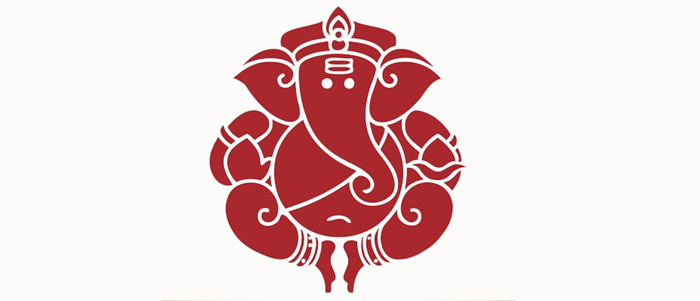Ganesh Chaturthi commemorates the birthday of Lord Ganesh. On this day, beautiful handcrafted idols of the Lord are installed both in homes and in public. Prana Pratishtha is performed to invoke the power of the deity into the idol, followed by a 16 step ritual known as Shodashopachara Puja. During the ritual, various offerings including sweets, coconuts, and flowers are made to the idol. The ritual should be performed at an auspicious time around midday, known as Madhyahna, when Lord Ganesh is believed to have been born.
It's important, according to tradition, not to look at the moon during certain times on Ganesh Chaturthi. If a person sees the moon, they'll be cursed with accusations of theft and dishonored by society unless they chant a certain mantra.
Apparently, this came about after Lord Krisha was falsely accused of stealing a valuable jewel. Sage Narada said that Krishna must've seen the moon on Bhadrapada Shukla Chaturthi (the occasion that Ganesh Chaturthi falls on) and was cursed because of it. Furthermore, anyone who saw the moon then would be cursed in a similar way.
The idols of Lord Ganesh are worshiped every day, with an aarti in the evening. The largest Ganesh statues, on display to the public, are usually taken out and immersed in water on Anant Chaturdasi. However, many people who keep an idol in their homes carry out the immersion much before this.
Where is it Celebrated?
Mostly in the states of Maharashtra, Goa, Tamil Nadu, Karnataka and Andhra Pradesh. One of the best places to experience the festival is in the city of Mumbai. Celebrations take place in a special way at the towering Siddhivinayak temple, located in the central suburb of Prabhadevi, which is dedicated to Lord Ganesha. An incalculable number of devotees visit the temple to join in prayers and pay their respects to the God during the festival. In addition, around 10,000 statues of Lord Ganesh are displayed at various locations in the city.
What Rituals are Performed?
Once a statue of Lord Ganesh is installed, a ceremony is undertaken to invoke his holy presence into the statue. This ritual is called the Pranapratishhtha Puja, during which a number of mantras are recited. Following this a special worship is performed. Offerings of sweets, flowers, rice, coconut, jaggery and coins are made to the God. The statue is also anointed with red chandan powder. Prayers are offered to Lord Ganesha every day during the festival. Temples devoted to Lord Ganesha also organize special events and prayers.
Those who have a Ganesha statue in their house treat and care for him as a much loved guest.
Why are the Ganesh Statues Immersed in Water at the End of the Festival?
Hindus worship idols, or statues, of their gods because it gives them a visible form to pray to. They also recognize that the universe is in a constant state of change. Form eventually gives away to formlessness. However, the energy still remains. The immersion of the statues in the ocean, or other bodies of water, and subsequent destruction of them serves as a reminder of this belief.
How is it Celebrated?
The festival begins with the installation of huge elaborately crafted statutes of Ganesha in homes and podiums, which have been especially constructed and beautifully decorated. Artisans put months of effort into making the statues. It's forbidden to look at the moon on this first night as legend had it the moon laughed at Lord Ganesha when he fell from his vehicle, the rat. On Ananta Chaturdasi (the last day), the statues are paraded through the streets, accompanied by much singing and dancing, and then immersed in the ocean or other bodies of water.
In Mumbai alone, more than 150,000 statues are immersed each year!
What is the Significance of Anant Chaturdasi?
You may be wondering why the immersion of Ganeshi idols concludes on this day. Why is it special? In Sanskrit, Anant refers to eternal or infinite energy, or immortality. The day is actually devoted to the worship of Lord Anant, an incarnation of Lord Vishnu (the preserver and sustainer of life, also referred to as the supreme being). Chaturdasi means the "fourteenth". In this case, the occasion falls on the 14th day of the bright half of the moon during the month of Bhadrapada on the Hindu calendar.



Contact Us